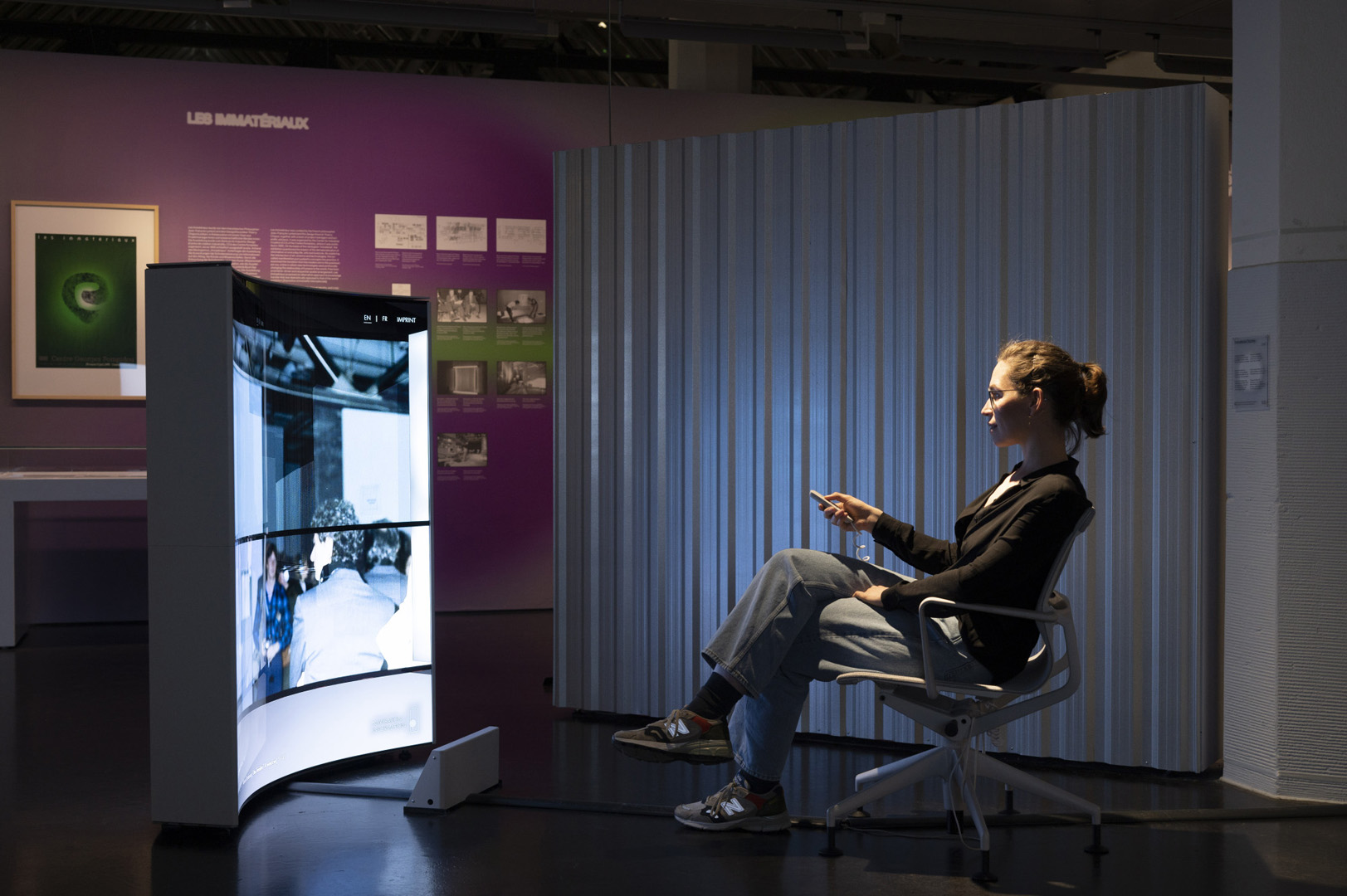“Immaterial Display” by Lívia Nolasco-Rózsás
Title:
- Immaterial Display
Artist(s) and People Involved:
- Lívia Nolasco-Rózsás
-
- ZKM | Center for Art and Media Karlsruhe
Exhibiting Artist(s):
Symposium:
Venue(s):
Artist Statement:
Exhibition, Interactive installation, Forum des images, May 18-21
Designed as an interactive installation, Immaterial Display immerses its visitors in a multi-layered journey that expands on their own actions and is therefore always unique. The spectator is therefore not only an observer, but also an actor who delves into a digital experience of which they have full control. It grants them the ability to roam through space, select, and approach the numerous exhibited objects in two fundamentally different digital models of two past landmark exhibitions: Les Immatériaux (1985, Centre Pompidou, Paris) and Iconoclash. Beyond the Image Wars in Science, Religion, and Art (2002, ZKM).
The exhibition models were developed by research teams at the institutions where the shows were staged at. A digital model, being an interactive presentation of exhibition concepts, is a novel approach to the exploration of exhibition histories, as well as to the themes, curatorial methods, and engagement with representation and mediation these exhibitions brought about. These models are not “digital twins”, in other words virtual copies of past assemblages of artifacts and the surrounding architecture, but rather the digital transposition of the exhibitions in an experiential manner, in line with their curatorial concept, was set as a goal.
Generating an exhibition through an immaterial constellation on a digital display was previously explored by Jeffrey Shaw through his installation The Virtual Museum (1999), a vital reference for the current project. The Immaterial Display is comprised of a screen as display. The current installation is equipped with a “driver’s seat” – a term used by Shaw to describe a chair that comes with a hand-held controller in which an incorporated self-regulating joystick offers inclusive accessibility. In both mechanisms the system is intuitive and is able to detect front/back, left/right, up/down directions, offering a complete range of motion and visual perspective as a result.
The Immaterial Display establishes a connection between virtual and real space, linking the featured exhibition models, and their respective institution with its own scenography and the area where it is physically located. Moreover it interconnects the two exhibitions with one another, while at the same time bridging the gap across time, space and spheres.
Research team:
Corina Apostol (Tallinn Art Hall)
Philippe Bettinelli (Centre Pompidou)
Julie Champion (Centre Pompidou)
Adela Demetja (Tirana Art Lab)
Lily Díaz-Kommonen (Aalto University)
Felix Koberstein (ZKM | Karlsruhe)
Marcella Lista (Centre Pompidou)
Cvijeta Miljak (Aalto University)
Lívia Nolasco-Rózsás (ZKM | Karlsruhe)
Head of project: Lívia Nolasco-Rózsás (ZKM | Karlsruhe)
Technical management: Thomas Schwab
Display Design: Commonplace Studio
User Interface development: Matthias Heckel
On May 21, team members from Centre Pompidou, Paris and ZKM | Karlsruhe Philippe Bettinelli, Marcella Lista, Lívia Nolasco-Rózsás and Marie Vicet will join a panel as part of the symposium program to talk about the exhibition Matter. Non-Matter. Anti-Matter. Past Exhibitions as Digital Experience.
Video:
Category:
All Works by the Artist(s) in This Archive:
- Lívia Nolasco-Rózsás
- More Art Events from Lívia Nolasco-Rózsás in this archive:

Immaterial Display
[ ISEA2023]





